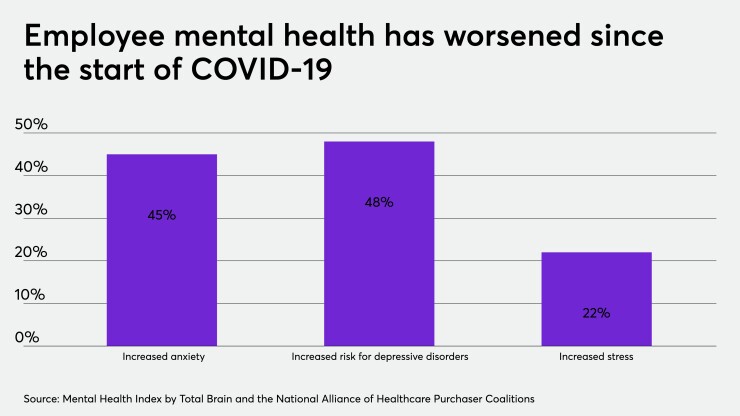Time lost with loved ones. Months of isolation. Blurred lines between the personal and professional. Burnout. Anxiety. These are just some of the feelings countless Americans have and are
After a year marked by a
With nearly half of employed Americans reporting feeling
As workplace leaders, we understand
But overall, we understand that a business’ most important asset is its people, and the importance of turning our shared experiences into strength and connection. We recognize the
Beyond this, we know that shifting the narrative on mental health in the workplace will require business leaders to step up and share our own experiences with our employees. When it comes to
Business leaders can’t solve this overnight, but they can start by addressing mental health and wellness head on. Companies that put mental health at the top of their agenda often have increased retention, better morale, and higher productivity and engagement levels. It’s not just the right thing to do, it’s a business imperative.
Additionally, change starts from the top. Leadership is in the best position to foster open, safe, and honest conversations on mental health within their organizations. Whether it’s Employee Assistance Programs or improved telehealth benefits, managers and employees must be given the proper tools and education to best serve their team’s mental health needs. If employees see that their leaders are supportive of mental health, they will be more likely to share their own experiences, access resources, and proactively seek help when needed.
As a result, business leaders are taking a more central role in supporting workers and their mental health, making a positive impact, building a culture of empathy and understanding, and tackling a stigma that has permeated the workplace for years.
While the COVID-19 pandemic will have a long-term impact on the mental and emotional well-being of all, the way our workplaces address mental health now will impact our country, the global community, and generations for years to come. This isn’t a quick fix, but together, we can ensure the workforce is equipped with the resources and support they need to navigate our new reality.






